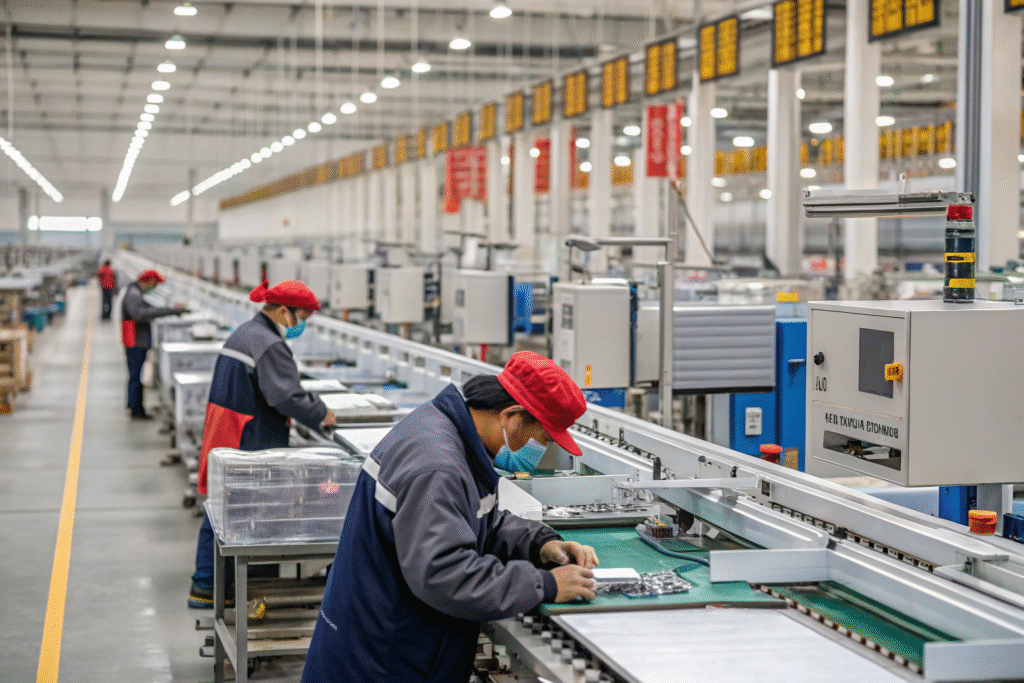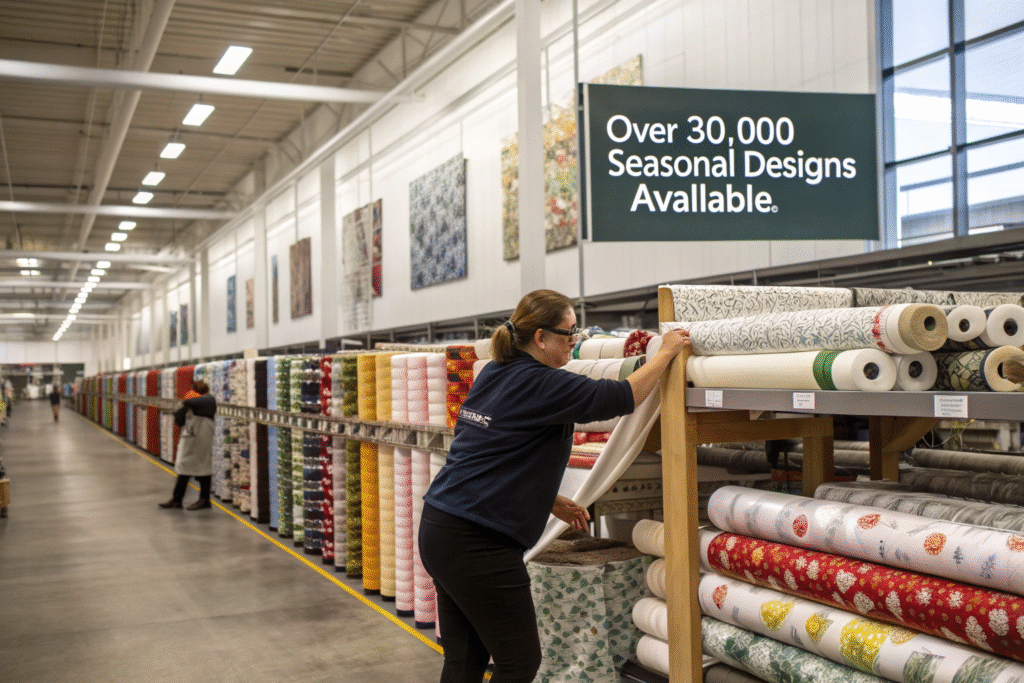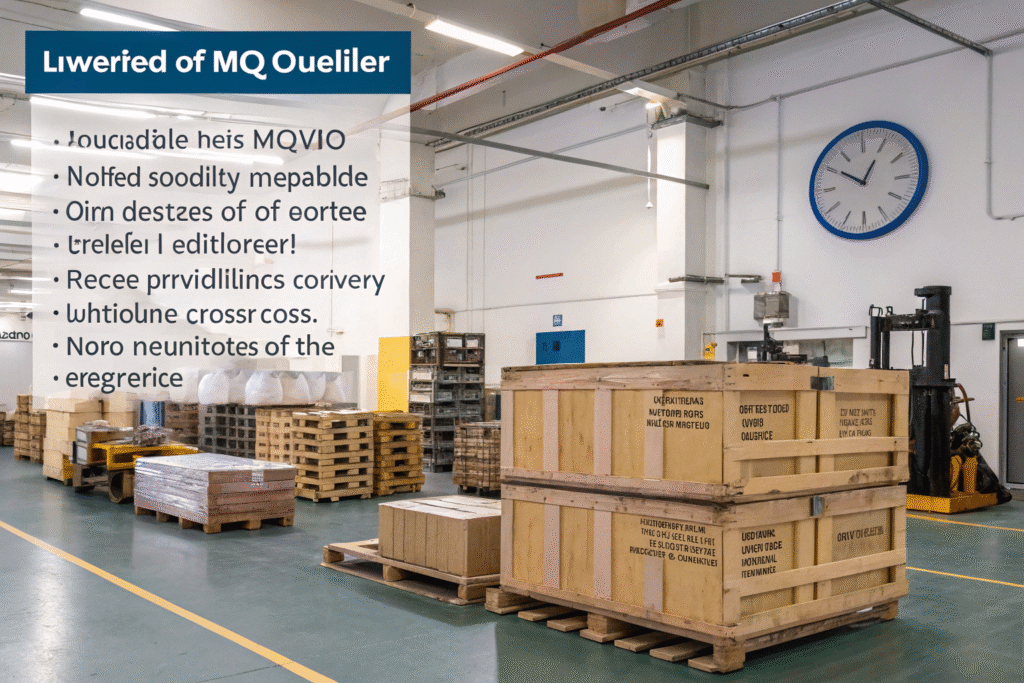You're finalizing your new clothing line. The designs are perfect. You've found the ideal fabric. Then, you see it: the MOQ. The Minimum Order Quantity feels like a wall stopping your dream. For many brands, especially new ones, high MOQs are a major hurdle. They tie up cash and create risk. But what if you could understand MOQ and, more importantly, lower it?
MOQ, or Minimum Order Quantity, is the smallest amount of fabric a mill or supplier is willing to produce for a single order. It's a key term in textile sourcing. You can lower your fabric MOQ by choosing stock fabrics, partnering with a flexible supplier, combining orders with other brands, or opting for a supplier with a multi-factory network that shares production capacity. Understanding why MOQs exist is the first step to negotiating them down.
This isn't just about getting a smaller number. It's about finding a smart partner. The right supplier sees your potential, not just your first order. They will work with you to grow. Let's break down the world of fabric MOQs. We will show you how to turn this barrier into a stepping stone for your brand's success.
Why do fabric suppliers set high MOQs?
You see a barrier. Suppliers see a necessity. High MOQs aren't about keeping small brands out. They are about basic business survival. The cost of setting up a production line is fixed. Whether we weave one meter or ten thousand meters, the machine setup time and labor are often the same. Producing a small quantity makes the cost per meter skyrocket. This is not sustainable for us or for you in the long run.
Suppliers set high MOQs primarily to cover their fixed production costs and ensure profitability. For a weaving factory, stopping a loom to set up a new design takes hours. For a dyeing factory, cleaning the vats and pipelines for a new color uses water, energy, and chemicals. These costs are real. A high MOQ spreads these costs over a larger volume. This keeps the price per meter reasonable for both parties. It is a fundamental part of how the textile supply chain operates efficiently.

What are the hidden costs behind MOQ?
The price you pay per meter is just the tip of the iceberg. Let's look at the hidden costs that MOQ helps to cover. First, there is research and development. Creating a new fabric involves skilled technicians and time. Second, there is quality control. Our CNAS-accredited testing center ensures every meter meets standards like SGS/ITS. This process is thorough but adds cost. For small orders, these fixed costs can be higher than the fabric's value itself.
- Labor and Machine Setup: A technician needs to program the looms and calibrate the dyeing machines. This takes skill and time, which is a cost.
- Raw Material Sourcing: Ordering a small amount of special yarn from a spinner often comes with its own high MOQ, forcing us to buy excess inventory.
Here is a simple breakdown of how fixed costs affect the price per meter:
| Order Quantity | Fixed Setup Cost | Cost per Meter (Fabric + Setup) |
|---|---|---|
| 100 meters | $500 | $7 per meter |
| 1000 meters | $500 | $2.5 per meter |
As you can see, the same $500 setup cost makes the small order prohibitively expensive. Understanding this builds empathy and a foundation for smarter negotiation.
How does production type affect MOQ?
Not all fabrics are created equal, and neither are their MOQs. The MOQ is directly tied to how complex the fabric is to make. A simple plain weave cotton from our stock collection will have a very low MOQ, sometimes even just a roll. A complex custom jacquard with a new fiber blend will have a much higher MOQ. The more steps involved, the higher the minimum.
For example, a fabric requiring digital printing and then embroidery will involve multiple factories. Each has its own setup and minimums. Our integrated network helps here. We have our own weaving factory and partner with specific printing and embroidery factories. This allows us to coordinate and sometimes consolidate minimums across different production stages. It gives us more flexibility than a single, isolated factory.
What strategies can I use to lower fabric MOQs?
You need a smaller order, and we need to keep our business running. This isn't a conflict; it's a collaboration. The goal is to find a middle ground where your needs for flexibility meet our needs for basic efficiency. The key is to approach your supplier with a partnership mindset, not just a transactional one.
The most effective strategy is to choose a supplier with a vast stock fabric library and a flexible production model. At Fumao, we keep over 30,000 seasonal designs in stock. This allows you to order small quantities, even a single roll, with no MOQ. For custom fabrics, we offer a multi-factory network. We can split your order across our facilities to meet lower minimums without sacrificing speed or quality.

Can ordering from stock fabrics reduce my MOQ?
Absolutely. This is the simplest and fastest way to bypass MOQ challenges. Our massive inventory is your secret weapon. Instead of developing a custom fabric from scratch, you can browse our live inventory. You can select from a wide range of chiffons, satins, linens, and functional textiles. These are ready to ship immediately.
This approach gives you incredible speed and agility. It is perfect for testing the market with a new design or for producing limited editions. You get the same high quality with our QR code tracking for composition and test reports. But you avoid the development time and cost. It's a low-risk way to build your initial collection and build trust with your supplier before moving to custom projects.
How does a flexible supplier help with MOQ?
A flexible supplier acts as a partner, not just a producer. We achieve this through two main channels. First, our agile R&D and supply chain allows for 48-hour sampling. This means we can quickly create a prototype for you to approve before committing to a large bulk order. Second, our position in the Keqiao cluster gives us unparalleled networking. If one of our cooperative factories has a high MOQ for a specific process, we can often find another within our network with a lower threshold.
We understand that your business is growing. We look at your brand's potential. We might offer a slightly higher price per meter for a lower MOQ, instead of rejecting your business entirely. Our goal is to grow with you. By proving your reliability and growth potential with initial smaller orders, you position yourself for even better terms in the future.
Are there risks in choosing a low MOQ supplier?
The hunt for a low MOQ can sometimes lead to costly mistakes. If a price seems too good to be true for a tiny order, it probably is. The global fabric market is competitive. A supplier offering no minimums at rock-bottom prices may be cutting corners you can't see.
The primary risks of an unvetted low-MQO supplier are inconsistent quality, unreliable delivery, and hidden costs. They might use lower-grade raw materials. Their quality control might be non-existent. They might delay your order to fit it between larger, more profitable runs. This can disrupt your entire production calendar and damage your brand's reputation.

How can low MOQ impact fabric quality?
To make a small order profitable, a less reputable supplier might compromise on quality. They might skip crucial testing steps to save time and money. For instance, they might not properly test for colorfastness or shrinkage. This means the beautiful fabric you receive might fade after one wash or shrink unpredictably, leading to customer returns.
They might also use fabric from a previous run or mix yarn batches, resulting in inconsistent shading across your order. At Fumao, our integrated model protects you from this. Even for low MOQ orders, every meter goes through our strict inspection and testing process. We provide the same data and guarantees, ensuring a 98% client pass rate, regardless of order size.
What logistical pitfalls come with low MOQ?
Logistics for small orders can be a nightmare if not handled professionally. Some suppliers might lack experience with efficient global logistics for smaller shipments. This can lead to high shipping costs per meter, slow transit times, and customs clearance issues. The promise of a low MOQ is meaningless if the fabric never arrives on time.
Our company has built resilience by serving diversified markets, including the EU and RCEP regions. We are experts in streamlined logistics. We can consolidate your smaller fabric order efficiently. We ensure clear customs clearance and provide real-time tracking. Our financial stability means we won't disappear with your deposit. Your supply chain is secure with us.
How can I build a partnership to reduce MOQs long-term?
Think beyond a single order. The most powerful way to secure favorable MOQs is to transform your supplier relationship from transactional to strategic. When we see you as a long-term partner, we are far more willing to invest in your growth by offering flexible terms on early orders.
Building a long-term partnership is the most effective strategy for reducing MOQs. This involves clear communication, consistent ordering, and demonstrating commitment. Show us your business plan. Share your growth vision. Pay your invoices on time. This reliability makes you a valuable client worth investing in. We are more likely to lower our MOQ for a brand we believe in and trust.

Why is communication key to negotiating MOQ?
Open and honest communication from the start sets the tone. Don't just send an email asking for the "lowest MOQ." Instead, introduce your brand. Explain your stage and your challenges. Ask if there is flexibility and what you can do to make a smaller order work for them. Perhaps you can be flexible on the delivery timeline, allowing them to fit your order into a production gap.
Ask smart questions based on what you've learned. "Would the MOQ be lower if we used a stock yarn?" or "Could we use a standard organic cotton instead of a custom-dyed one?" This shows you understand the constraints and are willing to collaborate on a solution. This approach is far more effective than making demands.
How does long-term planning benefit both of us?
When we know you have a steady stream of orders planned, we can plan too. This allows us to be more efficient. We can schedule your repeat orders for our stock fabrics more effectively. We can even pre-purchase some raw materials for your future custom projects, securing a better price that we can pass on to you.
Your growth becomes our shared goal. We've done this with brands that started with 500-meter orders. They are now ordering 10,000 meters per style. By supporting them at the beginning, we earned their loyalty. They got the quality and service that helped them scale. This is the core of our philosophy: we don't just sell fabrics; we co-create value.
Conclusion
Navigating Minimum Order Quantity doesn't have to be a dream-killer. It's a manageable part of the fabric sourcing process. The key is to understand the supplier's perspective, employ smart strategies like using stock fabrics, and choose a flexible, partner-oriented supplier. Remember, the goal is not just to find the lowest number, but to secure a reliable source of high-quality fabric that will help your brand thrive.
By building a transparent, long-term relationship with the right producer, you can overcome the MOQ hurdle. You can build a fashion brand that is both creative and commercially viable. Your success depends on a strong supply chain foundation. Let us be that foundation for you.
Ready to produce your clothing line with a fabric partner who understands your needs? Contact our Business Director, Elaine, today to discuss your project and discover how we can offer you flexible, high-quality fabric solutions. Reach out at elaine@fumaoclothing.com. Let's weave your success story together.










